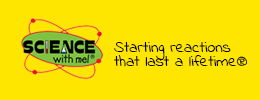
September 2007
It finally happened!!!!!!!!! the day before yesterday on July 31st at age 7 and a quarter–
Loghlen lost his first tooth!!!!!!!!
There was great excitement and, of course, lots of questions.
- Is the tooth dead or alive?
- What’s a tooth made of anyway?
- _And not to mention….._How much is a tooth valued by the tooth fairy these days?
Seizing the moment for science I whipped out our What’s inside my tooth? coloring sheet and Loghlen, Luke and Leah all colored it and we chatted about it. Older kids can do the Color and Label one.
Here’s the one Luke age 5 did. It’s very nice I think.
FAST FORWARD: February 14 2012
Loghlen is now age 11 – he will be twelve in April. He just lost another tooth today. This time it wasn’t an incisor like when he was 7 – it was a premolar. ☹ It’s wonderful and a little bit sad to watch my son grow up. I miss the early years but these years are also exciting. Of course the tooth loss reminded me of when he was 7 and we did the Science With Me! What’s inside my tooth? coloring sheet AGAIN! (and he didn’t object!!!)
Luke and Leah were begging (yes begging!!!) to do one too so I let them ☺
So we talked about what’s inside the tooth and discussed enamel, dentin and the pulp.Here’s a brief summary of what we learned together:
- The part of the tooth that is visible above the gum is called the crown.
- The crown of your tooth is covered with enamel (which kinda sounds like camel). Enamel is the hardest substance in your body – which is probably a good thing with all the chewing you have in store for your teeth. However if you don’t brush your teeth, acids that are produced by bacteria in your mouth can easily attack your enamel. Sugar causes tooth decay so remember to brush your teeth well ESPECAILLY after devouring all that St. Valentine’s Day candy!
- Under our tooth’s enamel is a substance called dentin, which is similar to bone. Our teeth are mostly made up by dentin.
- At the core of our tooth is the pulp, which contains nerve endings and blood vessels. If we drink something that is too hot or too cold the nerves in our teeth quickly send a message to our brain telling us to stop eating or drinking whatever we happen to be eating or drinking!
- We have 4 kinds of teeth: incisors, canines, molars and premolars.
- The front teeth are called incisors and they are used to cut food. We have four incisors in our upper jaw and four incisors in our lower jaw.
- The next two side teeth, which are long and pointed, and look like fangs are called canines and they are used to tear food. We have two canines in our upper jaw and two in our lower jaw.
- We have four premolars in our upper jaw and four premolars in our lower jaw, which are used to crush and grind food.
- Our largest teeth are our molars and they are located at the back of the jaws. There can be as many as six of these in your upper jaw and six in your lower jaw but they take time to come in.
- Note: Luke said he said he likes the large incisors that beavers have. Leah said he prefers the look of cows with their large molars for munching.
- We have two sets of teeth in our life. The first set of 20 called our milk teeth, start to come in when we are about 6 months old. Our adult teeth gradually replace these. We have 32 adult teeth.
To learn more about our teeth be sure and read our Learn about the Teeth article.





